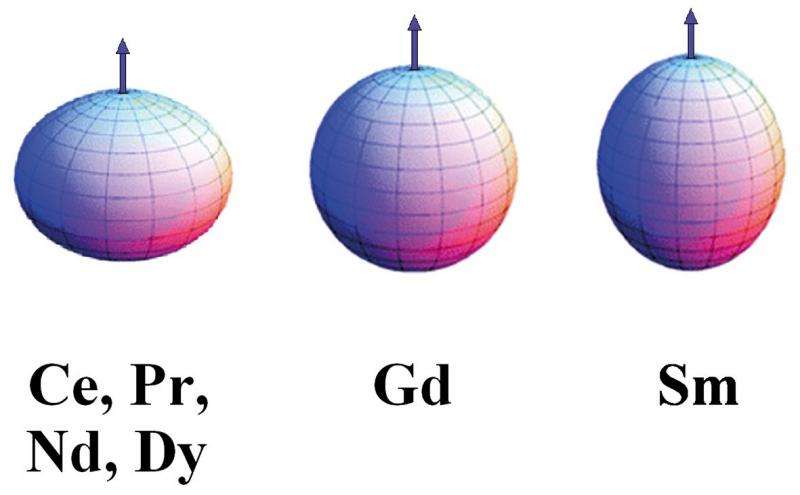New method to make permanent magnets more stable over time

For physicists, loss of magnetisation in permanent magnets can be a real concern. In response, the Japanese company Sumitomo created the strongest available magnet—one offering ten times more magnetic energy than previous versions—in 1983. These magnets are a combination of materials including rare-earth metal and so-called transition metals, and are accordingly referred to as RE-TM-B magnets. A Russian team has now been pushing the boundaries of magnet design, as published in a recent study in EPJ Plus.
They have developed methods to counter the spontaneous loss of magnetisation, based on their understanding of the underlying physical phenomenon. Roman Morgunov from the Institute of Problems of Chemical Physics at the Russian Academy of Sciences and colleagues have now developed a simple additive-based method for ensuring the stability of permanent magnets over time, with no loss to their main magnetic characteristics.
To design magnets that retain their magnetic stability, the authors altered the chemical composition of a RE-TM-B magnet. Their method consists in inserting small amounts of Samarium atoms at random places within the crystalline sub-lattice of the magnet's rare-earth component. They observed a multi-fold increase in the magnet's stability over time with as little as 1% Samarium. The advantage of using such low quantity of additives to stabilise the magnet is that it does not alter the magnetic properties.
The authors believe this result is linked to Samarium's symmetry. It differs from the crystalline structure of Dysprosium atoms, which enter the composition of the magnet's rare-earth component. As a result, spontaneous magnetisation no longer takes place. This is because the potential barriers separating the magnetisation states of different energies are enhanced by the disrupted symmetry.
Further developments of this research will most likely focus on identifying the discrete magnetisation jumps—elementary events that initiate the reversible magnetisation, leading to a loss in stability.
More information: Roman B. Morgunov et al. Giant effect of Sm atoms on time stability of (NdDy)(FeCo)B magnet, The European Physical Journal Plus (2016). DOI: 10.1140/epjp/i2016-16344-7
Provided by SciencePOD


















